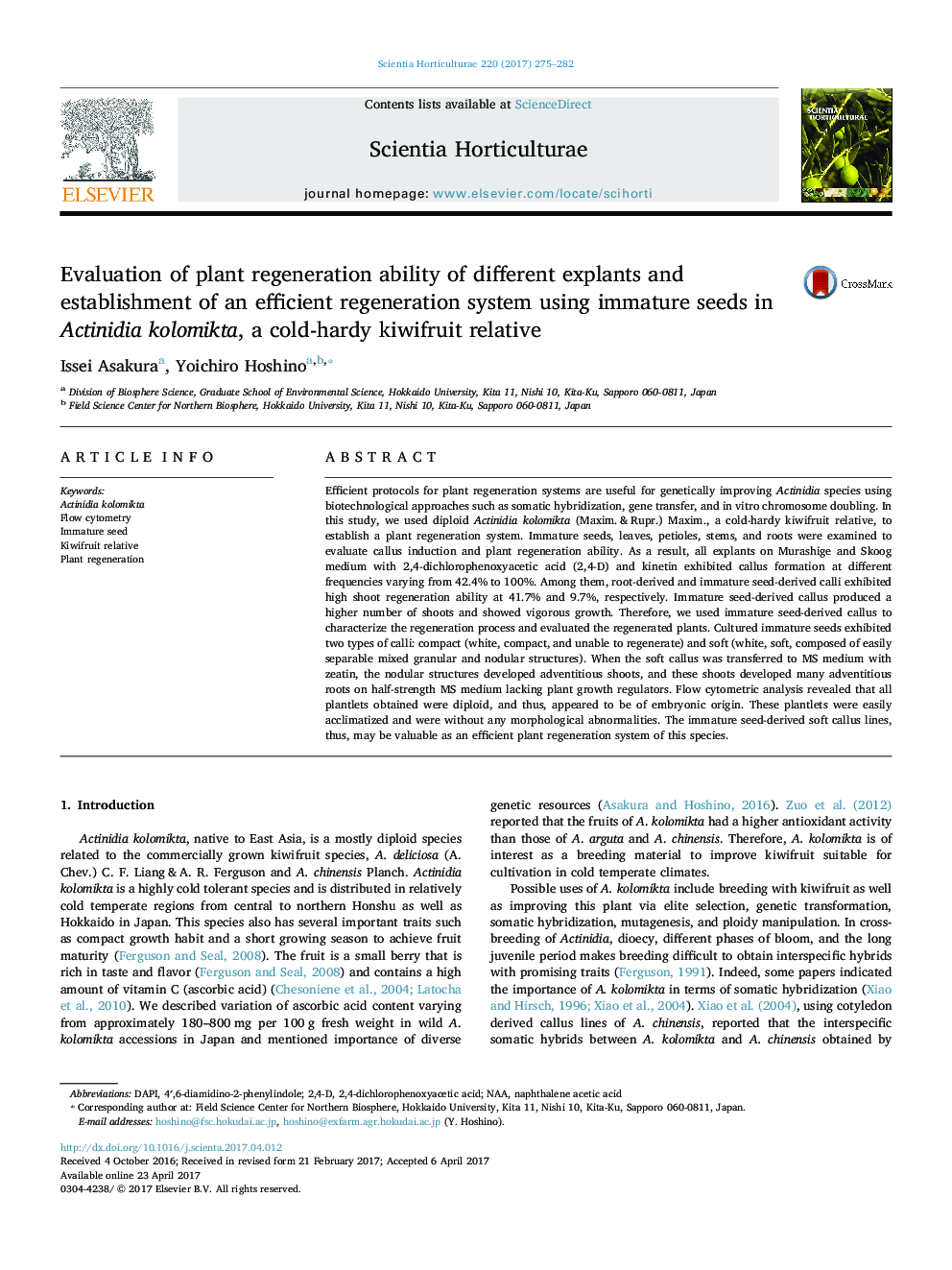| کد مقاله | کد نشریه | سال انتشار | مقاله انگلیسی | نسخه تمام متن |
|---|---|---|---|---|
| 5769629 | 1628778 | 2017 | 8 صفحه PDF | دانلود رایگان |

- Callus was induced from various tissues in diploid Actinidia kolomikta.
- Immature seed-derived callus produced the highest number of shoots.
- Two types of calli were induced from immature seeds: compact and soft callus.
- Soft callus had high regeneration ability; compact callus showed no organogenesis.
- All the regenerated plants from soft callus were diploid.
Efficient protocols for plant regeneration systems are useful for genetically improving Actinidia species using biotechnological approaches such as somatic hybridization, gene transfer, and in vitro chromosome doubling. In this study, we used diploid Actinidia kolomikta (Maxim. & Rupr.) Maxim., a cold-hardy kiwifruit relative, to establish a plant regeneration system. Immature seeds, leaves, petioles, stems, and roots were examined to evaluate callus induction and plant regeneration ability. As a result, all explants on Murashige and Skoog medium with 2,4-dichlorophenoxyacetic acid (2,4-D) and kinetin exhibited callus formation at different frequencies varying from 42.4% to 100%. Among them, root-derived and immature seed-derived calli exhibited high shoot regeneration ability at 41.7% and 9.7%, respectively. Immature seed-derived callus produced a higher number of shoots and showed vigorous growth. Therefore, we used immature seed-derived callus to characterize the regeneration process and evaluated the regenerated plants. Cultured immature seeds exhibited two types of calli: compact (white, compact, and unable to regenerate) and soft (white, soft, composed of easily separable mixed granular and nodular structures). When the soft callus was transferred to MS medium with zeatin, the nodular structures developed adventitious shoots, and these shoots developed many adventitious roots on half-strength MS medium lacking plant growth regulators. Flow cytometric analysis revealed that all plantlets obtained were diploid, and thus, appeared to be of embryonic origin. These plantlets were easily acclimatized and were without any morphological abnormalities. The immature seed-derived soft callus lines, thus, may be valuable as an efficient plant regeneration system of this species.
Journal: Scientia Horticulturae - Volume 220, 16 June 2017, Pages 275-282